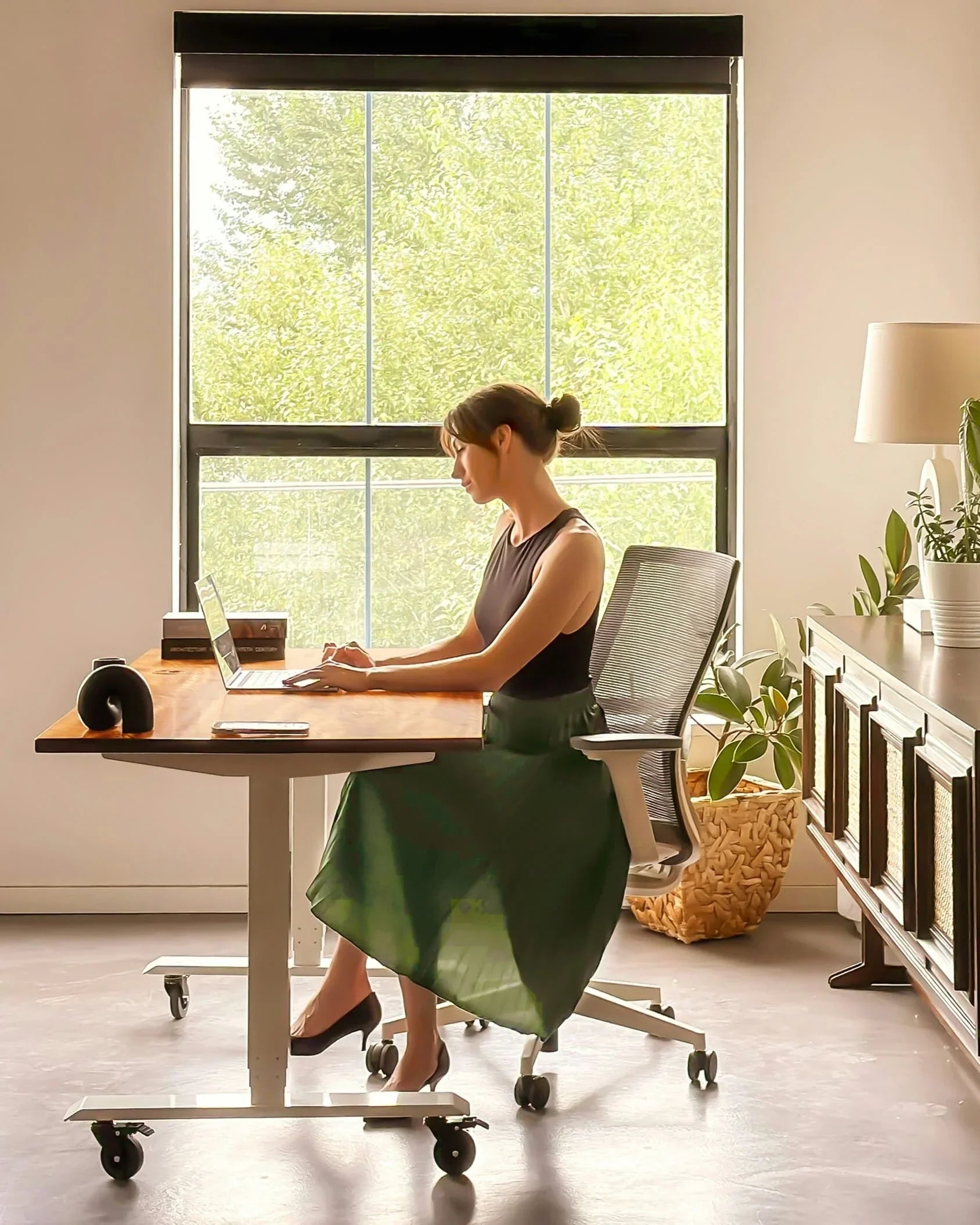Ergonomics at work constitutes a real challenge for the health of employees and the performance of companies .
According to Ameli , musculoskeletal disorders (MSDs) represent 87% of occupational illnesses in France, which underlines the importance of ergonomics at work.
In this article, we explain what workplace ergonomics is and its benefits, as well as the role of companies in terms of ergonomics.
What is ergonomics at work?
Ergonomics at work corresponds to the adaptation of working conditions and environment to the physical and psychological needs of employees .
Poor ergonomics at work can lead to accidents and health problems. According to the SSTRN (Nantes Regional Occupational Health Service), one in five sick leave cases in France is related to back pain.
Workplace ergonomics applies equally to industrial workstations and office workstations. The common goal is to prevent and reduce health risks by designing an ergonomic workstation.

For example, an ergonomic office chair, a sit-stand desk, a screen placed at the right height and good lighting are the basics of ergonomics in the office or when teleworking .
The benefits of ergonomics for employees
Reduction of musculoskeletal disorders (MSDs)
According to the National Institute for Research and Safety (INRS) , in 2021, compensated upper and lower limb MSDs resulted in a loss of more than 11 million working days and 1 billion euros in costs covered by company contributions to the general scheme.
Good ergonomics at work limits the risks of musculoskeletal disorders by promoting good posture in a natural way.
Improved comfort and well-being
Workstation ergonomics helps promote the comfort and well-being of employees on a daily basis .
Installing ergonomic furniture in industrial workstations or offices allows employees to work in a more comfortable environment specifically adapted to their needs and objectives.
Better concentration
Office ergonomics helps limit distractions by reducing physical discomfort that disrupts employees' attention.
When the office chair is comfortable and allows for a natural posture, the desk and monitor are at the right height, the mouse and keyboard are suitable, and there are no noise disturbances or other unnecessary distractions, employees can concentrate more on their work .
Reduction of fatigue
Ergonomics at work helps to significantly reduce fatigue .
Ergonomic furniture, such as an office ball chair, promotes micro-movements and good posture, thus preventing back pain and fatigue.
The Bloon Active Seat or a sit-stand desk helps combat a sedentary lifestyle by staying active at the office. Staying active at the office promotes good sleep , which also limits fatigue.

Good lighting, a screen and a desk positioned at the right height are important ergonomic criteria to avoid neck pain and eye strain .
Improved mood
Working in good ergonomic conditions has a direct impact on morale and job satisfaction .
When employees don't have to struggle daily with the physical discomfort caused by unsuitable equipment, their mood improves.
Ergonomics in the workplace provides a sense of well-being that influences employee relationships and overall motivation. Conversely, persistent pain and difficulty performing work properly lead to low morale.
Companies that invest in office ergonomics often see a more positive work environment and more cohesive teams .
Stress reduction
Ergonomics at work contributes to stress reduction by eliminating many sources of physical and psychological tension while promoting comfort.
Constantly having to adjust your posture to compensate for unsuitable furniture creates additional stress. On the contrary, an ergonomic workstation helps promote concentration on work without discomfort.
Being able to adjust your chair, screen, or desk to suit your needs also provides a sense of control that reduces anxiety.
The benefits of ergonomics for businesses
Ergonomics proves to be a beneficial investment for businesses in the long term. It helps reduce sick leave and accidents, while increasing employee comfort and productivity.
Decrease in absenteeism
Ergonomics at work can significantly reduce absenteeism .
By designing ergonomic workstations, companies promote the physical well-being of employees, thus limiting musculoskeletal disorders (MSDs), which are the main cause of prolonged sick leave.
For example, an ergonomic office chair, correct keyboard position and a monitor at the right height can reduce neck and back pain, thus improving work presence.
Increased productivity
Integrating ergonomics into the office contributes to an increase in employee productivity and company performance .
An employee with an ergonomic workstation is more comfortable, motivated and less tired, allowing them to perform their tasks more efficiently.
For example, having wrist support or adequate natural lighting can help reduce distractions and promote better daily performance.
Improving the quality of work
An optimized environment thanks to ergonomics at work also plays a major role in the quality of employees' work .
By providing ergonomic furniture, distractions and stress are reduced, productivity and concentration are improved, which promotes quality work without errors.
Strengthening the employer image
A corporate culture based on office ergonomics strengthens the company's attractiveness .
By focusing on employee well-being, companies attract talent and maintain motivated teams .
Offering ergonomic workspaces, such as height-adjustable desks or adapted breakout areas, projects the image of a caring and modern company.
What businesses can put in place
Workstation layout

Ergonomic workstation design includes the installation of adjustable furniture , such as sit-stand desks and ergonomic chairs, to accommodate individual body shapes .
Equipment such as footrests or ergonomic mice also contribute to comfort and the prevention of pain linked to repetitive postures .
For remote positions, employers may sometimes provide a budget dedicated to setting up an ergonomic workspace at home.
Adapted tools and equipment
Investing in the right tools is essential for improving workstation ergonomics. For example, an ergonomic keyboard reduces wrist strain, while a vertical laptop stand improves cervical posture.
These devices, although simple, support employees in their daily missions while protecting their health in the long term.
Work organization
Another key element of workplace ergonomics is good organization . This includes flexible working hours, regular breaks to avoid eye strain, and a balanced distribution of tasks .
To improve efficiency, managers can, for example, organize active meetings , thus reducing sedentary behavior and promoting more dynamic exchanges.
Employee training and awareness
Training teams on office ergonomics is crucial to ensuring they adopt better practices. Workshops on good posture, the importance of ergonomic workspaces, or active breaks can make a real difference.
Companies can also display informative posters or encourage their employees to use posture reminder apps to improve their comfort and efficiency.
In conclusion, ergonomics at work is a key element for employee well-being and business performance . It has many benefits for both employees and businesses. This is why all companies should facilitate and promote ergonomics at work.












